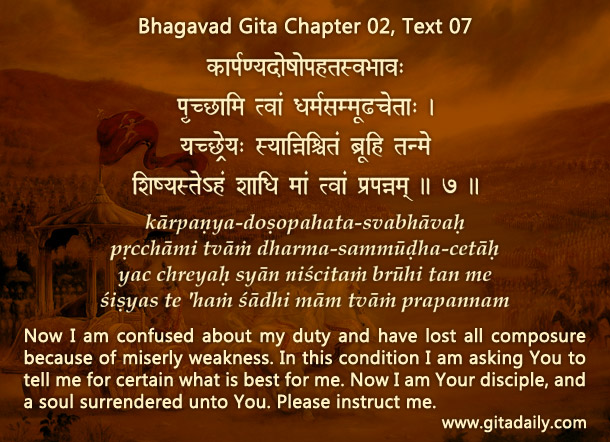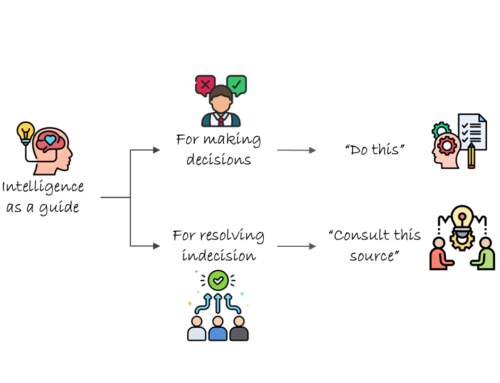The Bhagavad-gita begins with Arjuna facing a specific problem: to fight or not to fight. This problem, though ethically entangling, asks for a straightforward decision: tell me what to do.
Yet when Arjuna surrenders to Krishna (02.07), he doesn’t ask merely for a what-to-do type answer. He goes to the root of the issue by asking about dharma, the universal principle that governs action. The nature of Arjuna’s question points to his sagacity even amidst perplexity. Though he is facing a wrenching problem – a problem of monumental proportional, catastrophic consequence and undeniable urgency – still he focuses not on a fix-it type solution, but on education for understanding the underlying principles that govern action and decision. Indeed, the metaphysical depth of the Gita’s discussion that is the key to its perennial relevance, as contrasted with its contextual relevance, stems from the universality of the issues it discusses.
We all face situations in which we need help in making decisions. While children are often told “Do this and don’t do this,” responsible parents know that they need to go further and train their children not just in doing the right thing but also learning the right reasoning to eventually become competent enough for deciding how to decide what the right thing to do it. That’s what the Gita does by providing us its universal principles centered on life’s timeless spiritual truths that underlie its ephemeral material appearances.

Explanation of article:


Leave A Comment